At Maikoya Gion in Kyoto, the Kimono Tea Ceremony offers a unique glimpse into Japanese culture. Participants get to wear elegant kimonos and learn the art of matcha preparation from skilled guides. The intimate setting near Rokuharamitsuji Temple adds to the charm. It’s a perfect way to step back from the hustle and bustle, but there’s so much more to discover about the ceremony’s significance and what it includes.
Key Points
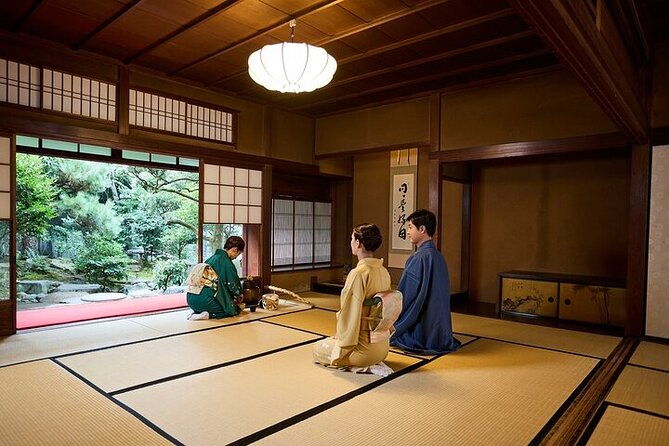
- Experience an authentic kimono tea ceremony at Maikoya Gion, immersing in Kyoto’s rich cultural heritage.
- Enjoy the serene atmosphere while learning the art of matcha preparation from knowledgeable guides.
- Participants wear elegant kimonos, enhancing the connection to Japanese tradition and history.
- The cozy venue accommodates small groups of up to six, fostering intimate connections.
- Conveniently located a 10-minute walk from Gion Shijo station, near Rokuharamitsuji Temple.
The Essence of the Kimono Tea Ceremony
When visitors step into the KIMONO TEA CEREMONY MAIKOYA in Kyoto, they’re not just attending an event; they’re seeing a centuries-old tradition that beautifully intertwines art, culture, and hospitality.
This ceremony isn’t just about sipping tea; it’s about experiencing mindfulness and respect. Participants don elegant kimonos, which adds to the overall ambiance and connection to history.
The skilled tea ceremony guides share insights into the meticulous preparation of matcha, highlighting its significance.
It’s a perfect blend of taste and tradition, making it an unforgettable experience. For anyone curious about Japanese culture, this ceremony offers a genuine taste of Kyoto’s heart.
Looking for more options in Kyoto? We've reviewed plenty of other experiences.
Location and Venue Details

Located in the heart of Kyoto, KIMONO TEA CEREMONY MAIKOYA at GION KIYOMIZU offers a unique venue for those looking to dive into the rich traditions of Japanese culture.
Just a short 10-minute walk from Gion Shijo station, it’s easy to get to, especially near the charming Rokuharamitsuji Temple.
The cozy space accommodates small groups of up to six, making it feel intimate and personal.
While not wheelchair accessible, it’s perfect for those wanting to soak in the atmosphere.
Plus, you’ll love the chance to don a beautiful kimono while enjoying this immersive experience!
What to Expect During the Experience
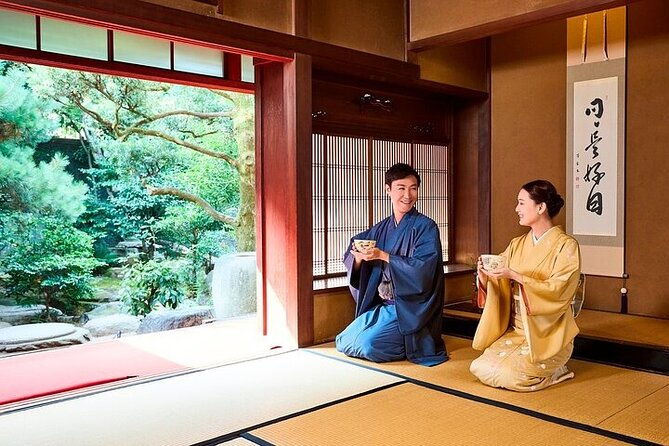
Stepping into KIMONO TEA CEREMONY MAIKOYA is like being transported into another world, where tradition and tranquility reign.
Guests will don beautiful kimonos, feeling the fabric’s history wrap around them. As the tea ceremony unfolds, they’ll learn about the delicate art of tea preparation, with each step steeped in meaning.
The serene atmosphere invites relaxation and reflection. It’s a chance to disconnect from the hustle and bustle of modern life.
Expect to embrace Japanese culture fully, engaging with knowledgeable guides who’ll share stories and insights, making the experience both educational and memorable.
Don’t forget to soak up the peaceful ambiance!
Inclusions and Highlights of the Ceremony
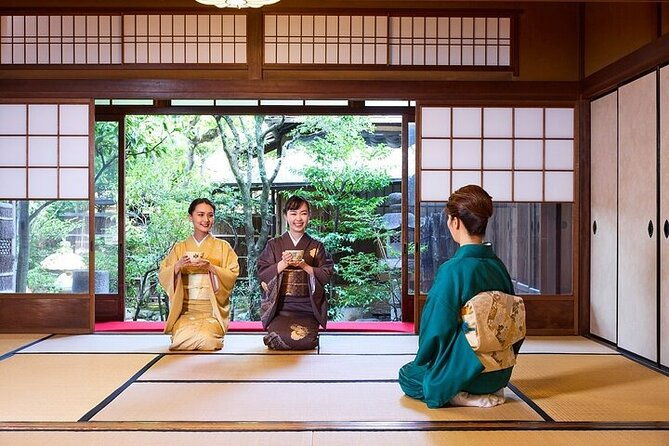
The Kimono Tea Ceremony at KIMONO TEA CEREMONY MAIKOYA offers a unique blend of inclusions that enhance the overall experience.
Guests get to don a beautiful kimono, seeing Japanese culture from the get-go. A knowledgeable guide leads the way, explaining the art of tea preparation and its significance.
You’ll enjoy authentic green tea, savoring its rich flavors while learning about the ceremony’s traditions. Plus, the convenience of hotel pickup and drop-off makes the experience hassle-free.
With a maximum of six participants, it’s an intimate setting that fosters connection and appreciation for this timeless ritual.
Transportation and Accessibility Information
When planning to experience the Kimono Tea Ceremony in Kyoto, you will find it easy to reach the venue, just a 10-minute walk from Gion Shijo station, near the serene Rokuharamitsuji Temple.
The area’s charming streets make the stroll enjoyable, filled with traditional architecture and little shops.
However, keep in mind that the venue isn’t wheelchair accessible, so it may not suit everyone.
Plus, children under 7 can’t join the ceremony, so plan accordingly.
Once the ceremony wraps up, attendees end back at the same meeting point, making it a hassle-free experience.
Enjoy the journey and soak in the culture!
- Kyoto: Kiyomizu-dera, Fushimi Inari & Gion Geisha District
- Kyoto: Visit Mario Papas Hometown and Great Lunch⭐️
- Kyoto: Arashiyama Bamboo Grove, Monkey Mountain Walking Tour
- From Kyoto/Osaka: Sagano Train Ride and Guided Day Tour
- Kyoto:Three Gardens Bike Tour
- Taste of Nishiki Market Walking Food Tour With Local Guide
Booking Process and Cancellation Policy
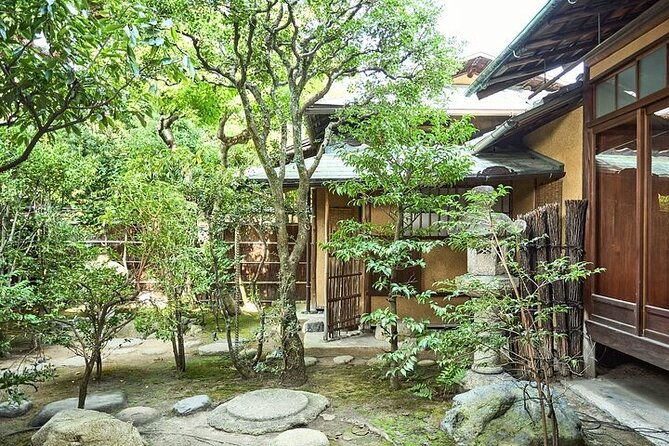
Since booking the Kimono Tea Ceremony in Kyoto is straightforward, travelers can easily secure their spot online.
They’ll find a range of options, with instant confirmation upon booking. The process is hassle-free, making it a breeze to plan ahead.
Plus, there’s a generous cancellation policy—free cancellations are available up to 24 hours before the event starts. This flexibility is great for those with changing plans.
Just remember, if you’re using Viator, you can book a maximum of five people; other sites may allow larger groups.
Tips for a Memorable Experience
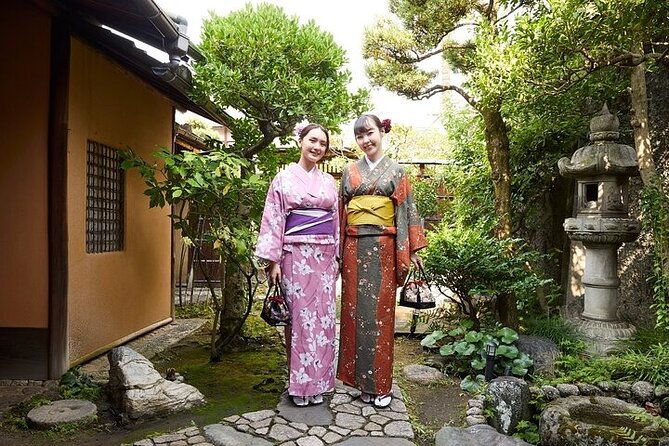
A vibrant kimono can transform the tea ceremony experience from ordinary to unforgettable.
To make the most of it, arrive early to soak in the serene atmosphere. Don’t hesitate to ask your tea ceremony guide questions; they love sharing insights about the traditions.
Capture the moment with photos, but remember to respect the space and others participating.
Savor each sip of the green tea, letting its flavors linger.
Lastly, engage with fellow participants; sharing stories enhances the experience.
Embrace the tranquility, and you’ll leave with cherished memories of Kyoto’s enchanting culture.
Cultural Significance of the Tea Ceremony
While many might see the tea ceremony as just a ritual, it’s actually a profound reflection of Japanese culture and philosophy.
This ceremony emphasizes harmony, respect, purity, and tranquility, values deeply embedded in daily life. It offers participants a chance to slow down and appreciate the moment, fostering mindfulness.
Plus, the meticulous preparation and presentation of tea symbolize a connection between the host and guests, emphasizing relationships over mere consumption.
Engaging in a tea ceremony in Kyoto isn’t just about sipping tea; it’s an opportunity to take in centuries of tradition, making it a must-experience for anyone visiting Japan.
Frequently Asked Questions
Can I Wear My Own Kimono for the Ceremony?
He can’t wear his own kimono for the ceremony. The venue provides beautiful kimonos that enhance the experience. Plus, it’s a great way to fully embrace the cultural atmosphere without any hassle.
Are There Age Restrictions for Participants?
There’re age restrictions for participants. Kids under seven can’t join the tea ceremony. It’s all about maintaining an atmosphere suitable for everyone. So, families should plan accordingly to enjoy this unique experience together!
Is the Ceremony Conducted in English?
The ceremony’s conducted in English, making it accessible for everyone. Participants can enjoy the rich traditions without language barriers. It’s a great chance to soak in Japanese culture while sipping delicious green tea.
What Should I Bring to the Ceremony?
For the ceremony, she should bring a sense of curiosity and respect. Comfortable shoes are a must, and maybe a light jacket. It’s all about enjoying the moment and embracing the culture around her!
Are Photography and Video Allowed During the Experience?
During the experience, photography’s typically allowed, but it’s best to check beforehand. They want everyone to enjoy the moment without distractions, so snap away respectfully and capture those beautiful memories!
The Sum Up
To sum it up, the Kimono Tea Ceremony at Maikoya Gion offers a unique chance to dive into Japanese culture while enjoying the tranquility of matcha preparation. Dressing in a stunning kimono and sipping authentic green tea is a memory you’ll cherish. Soak in the stories shared by your guides and embrace the moment. Whether you’re a culture buff or just looking for a peaceful experience, this ceremony is definitely worth your time while in Kyoto!
More Tour Reviews in Kyoto
- Kyoto and Nara Private Trip
- Learn Japanese guitar “Shamisen”
- Kyoto Sushi & Takoyaki Cooking Class near Gion and Kiyomizu-dera!
- Kyoto and Nara Day Trip – Golden Pavilion and Todaiji from Osaka
- Full Day Tour of Kyoto with Private Transportation
- Explore Arashiyama Bamboo Forest with Authentic Zen Experience
Still browsing? Here are more Kyoto experiences we've covered recently
- Kyoto and Nara Private Trip
- Learn Japanese guitar “Shamisen”
- Kyoto Sushi & Takoyaki Cooking Class near Gion and Kiyomizu-dera!
- Kyoto and Nara Day Trip – Golden Pavilion and Todaiji from Osaka
- Full Day Tour of Kyoto with Private Transportation
- Explore Arashiyama Bamboo Forest with Authentic Zen Experience
- Matcha Grinding Experience and Walking Tour in Uji Kyoto
- Kyoto Hidden Treasures: Special Temple & Garden Access Tour
- Kyoto Uji and Nara Tour with Sushi Making Experience
- Kyoto Private Customizable Day Tour with Guide and Vehicle
- Himeji Castle and Akashi Kaikyo Bridge Walking Tour from Kyoto
- Full Day Kyoto Tour : Bamboo Forest, Golden Temple, Fushimi Inari
